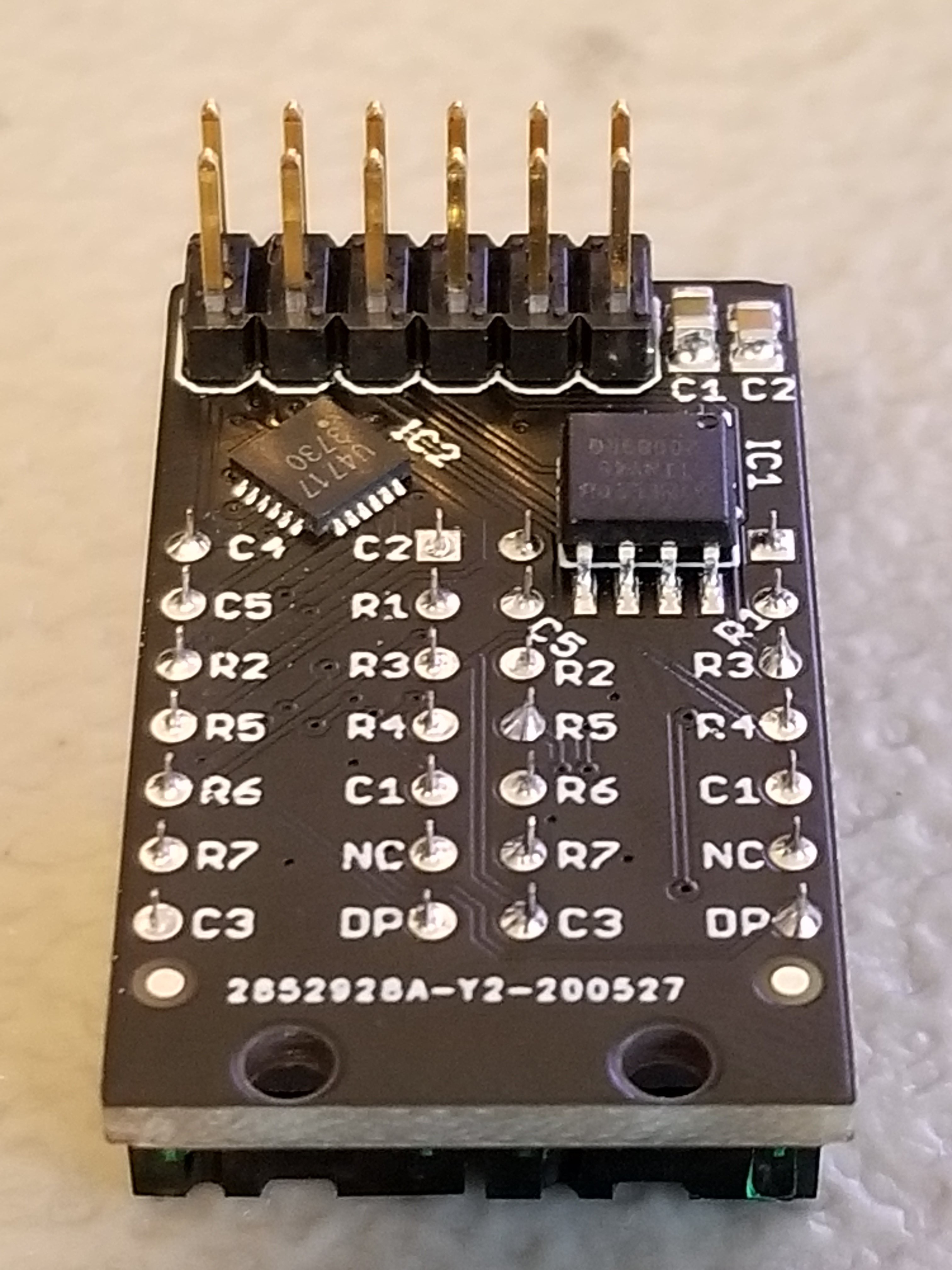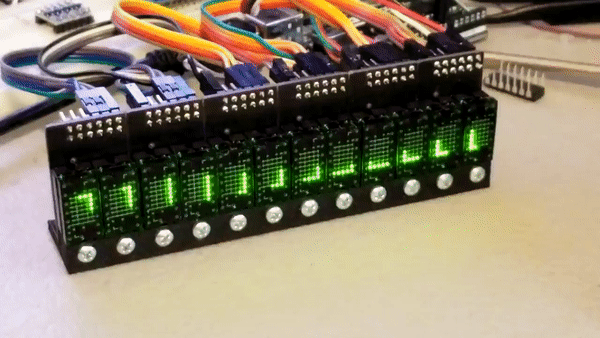When we last heard from [lixielabs] he was building Nixie tube replacements out of etched acrylic and LEDs. Well he’s moved forward a few decades to bring us the Pixie, a chainable, addressable backpack for tiny LED matrix displays.
 Each Pixie module is designed to host two gorgeous little Lite-On LTP-305G/HR 5×7 LED dot matrix displays, which we suspect have been impulse purchases in many a shopping cart. Along with the displays there is a small matrix controller and an ATTINY45 to expose a friendly electrical interface. Each module is designed to be mounted edge to edge and daisy chained out to 12 or more (with two displays each) for a flexible display any size you need. But to address the entire array only two control pins are required (data and clock).
Each Pixie module is designed to host two gorgeous little Lite-On LTP-305G/HR 5×7 LED dot matrix displays, which we suspect have been impulse purchases in many a shopping cart. Along with the displays there is a small matrix controller and an ATTINY45 to expose a friendly electrical interface. Each module is designed to be mounted edge to edge and daisy chained out to 12 or more (with two displays each) for a flexible display any size you need. But to address the entire array only two control pins are required (data and clock).
[lixielabs] has done the legwork to make using those pins as easy as possible. He is careful to point out the importance of a good SDK and provides handy Arduino libraries for common microcontrollers and a reference implementation for the Raspberry Pi that should be easy to crib from to support new platforms. To go with that library support is superb documentation in the form of a datasheet (complete with dimensions and schematic!) and well stocked GitHub repo with examples and more.
To get a sense of their graphical capabilities, check out a video of 6 Pixie’s acting as a VU meter after the break. The Pixie looks like what you get when a hacker gets frustrated at reinventing LED dot matrix control for every project and decided to solve it once and for all. The design is clean, well documented, and extremely functional. We’re excited to see what comes next!
ESP32 with an I2S mic running FFT with 1024 cells, with each octave overlaid to make a 12-note chromagram, being rendered live by Pixies!https://t.co/0nWQfX0W6W pic.twitter.com/UZgh5ymWAw
— Lixie Labs (@lixielabs) September 22, 2020















I want a VT220 made from these and a sponsor for the power bill!
That’s the most brilliant idea ever!!
They are LEDs, shouldn’t be more power than your bog standard 24″ TFT.
26 milliwatts per dot times ~60,000 dots is around a kilowatt and a half with them all lit. Still gonna be a bit thirsty with maybe a quarter to third of them lit at a time with a full page of text.
Gets real nasty with 1980 numbers, 100mW diodes and a toaster oven’s worth of logic running the show.
Not to say you couldn’t implement some power manglement and only blip them on a quarter of the time a few dozen times a second.
Well, I’m not sure if I ever had a full screen on a VTxxx
Where’s the video?
click the link to the cited tweet and you get:
https://twitter.com/lixielabs/status/1308543494970015744
https://www.tindie.com/products/connornishijima/pixie-chainable-dual-57-micro-led-displays/